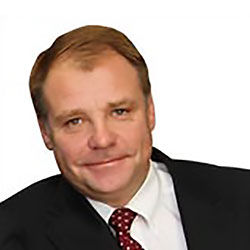


Dr. Rene Wollert

The Freudenberg Group is a family company offering its customers technically challenging product solutions and services. The Group develops and manufactures seals, vibration control components, filters, nonwovens, products for surface treatment, release agents and specialty lubricants, medical and mechatronic products. Milestones of the Group's innovations are the Simmering, Vileda wipes and Evolon microfilaments. Freudenberg's revolutionary new Simmerring ushered the company into a new era in sealing technology. The Simmerring - named after its inventor, Walther Simmer - was a radial shaft seal which replaced the felt seals that had been previously used. The production of Vlieseline interlinings and Vileda cloths, both nonwoven products, started in the 1950s. With Evolon technology, Freudenberg developed an entirely new spunbonded microfilament nonwoven production process which set new standards.
Freudenberg nonwovens are used in a multitude of applications thanks to their inexhaustible material properties and functionalities. We are constantly developing new products in partnership with our customers: From automatic print head cleaning for copying machines, surface protection in industrial packaging, artificial turf and tent coatings to shoe insoles. The strengths of Freudenberg Nonwovens are the ability to offer tailor-made solutions to customers, the long-standing experience of a global R&D team and the know-how for different nonwoven technologies. And: We constantly review our processes and structures to remain competitive on a global level. Freudenberg Nonwovens is part of the Freudenberg Group's R&D network. Via Freudenberg's central R&D department we have access to R&D experts covering all disciplines in material science. At the same time this corporate R&D team offers technologies and analytical equipment which a standalone Nonwovens business group cannot afford.
The market for medical devices is steadily growing. The growth rates of segments like Traditional Wound Care, Advanced Wound Care and Stoma have been showing moderate but also very stable growth rates over the years. The business with Transdermal Delivery Systems is growing strongly as the benefits of this technology, which originated in Japan, are spreading to the US and Europe. However budget cuts and general cost pressures in the European healthcare sector are challenging the industry to come up with cost effective solutions. Customers in emerging countries ask for cost effective solutions which provide good performance. The US and Europe request higher performance. There is also a trend towards more effective product solutions for complex indications (e.g. chronic wounds) which help to reduce the total cost of treatment. We are also seeing an increasing trend towards self-treatment products. Advanced Wound Care and Transdermal Delivery Systems are the fastest growing end use applications.
Spunlaid technology is not only growing in Europe, but also worldwide and offers a multitude of possibilities for engineered nonwovens.
Although Brazil and Argentina are currently affected by macroeconomic challenges, the South American region is still very important for us. Brazil and Argentina are fast growing markets for nonwovens.
The nonwoven markets in Europe and Asia are very different with regard to the range of applications. Last year, textile production in Asia was pretty strong and had a strong impact on our woven and knitted interlining turnover. Sales of nonwoven interlinings in Europe, however, declined. The upswing in the automotive industry in Asia had a very positive effect on our business. Asia is the fastest growing market in the world. The growth potential in Asia is much higher than in Europe. However, Europe is the technology leader in nonwovens production and plays therefore a key role. Some of our most advanced products are only marketed in Europe. These products still show attractive growth rates.
In Europe, the market for interlinings is saturated and that makes it difficult to grow. In the European healthcare business, we face many regulations. Meeting regulatory requirements and receiving approval by authorities are the biggest challenges. Price battles are not specific to the European markets, but are also a phenomenon of global competition.
The world we live in is of immeasurable value and should be preserved for future generations. Sustainability covers the entire product life cycle: from the use of valuable natural resources and energy in manufacturing to customers using our products, all the way to its ultimate disposal. It is our objective not only to meet international standards but also to proactively outperform them. We are pursuing the overarching goal of balancing our carbon footprint. This includes developing products based on recyclates and free from pollutants, formaldehyde etc., thus setting new standards in our industry sector. These efforts also include strict compliance with the EU's REACH regulations on chemicals.
DISCLAIMER: All views and opinions expressed in this column are solely of the interviewee, and they do not reflect in any way the opinion of technicaltextile.net.